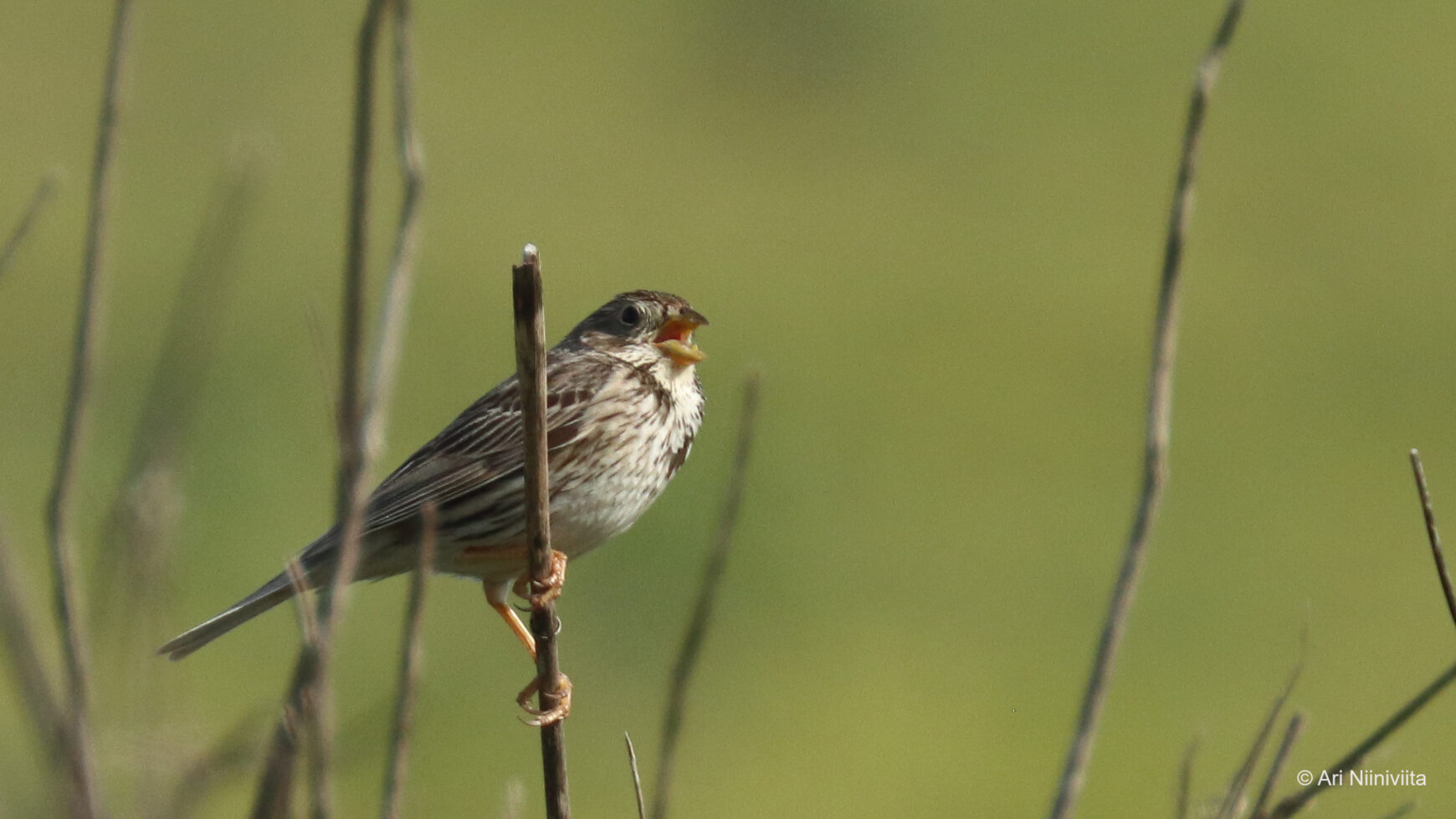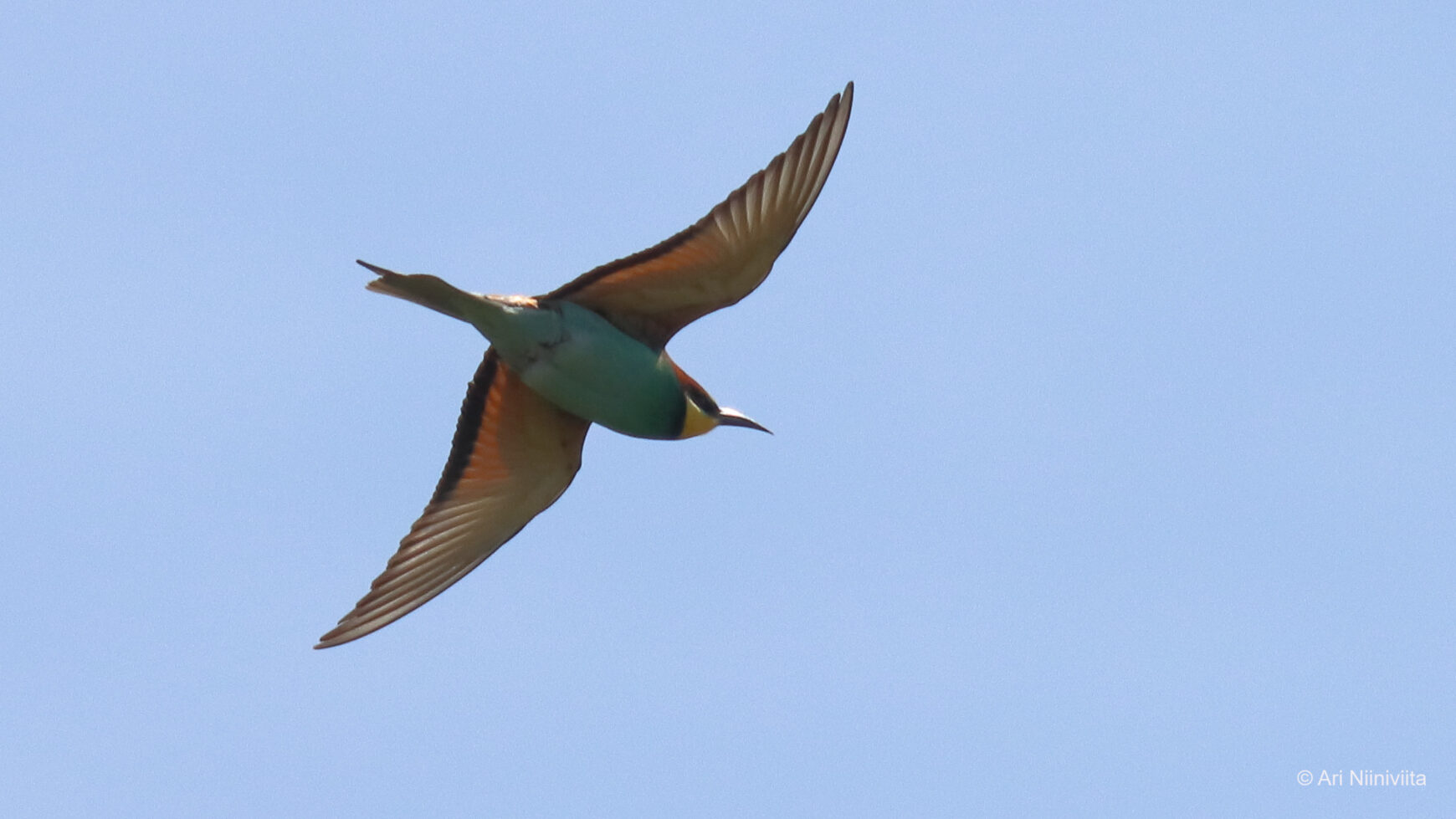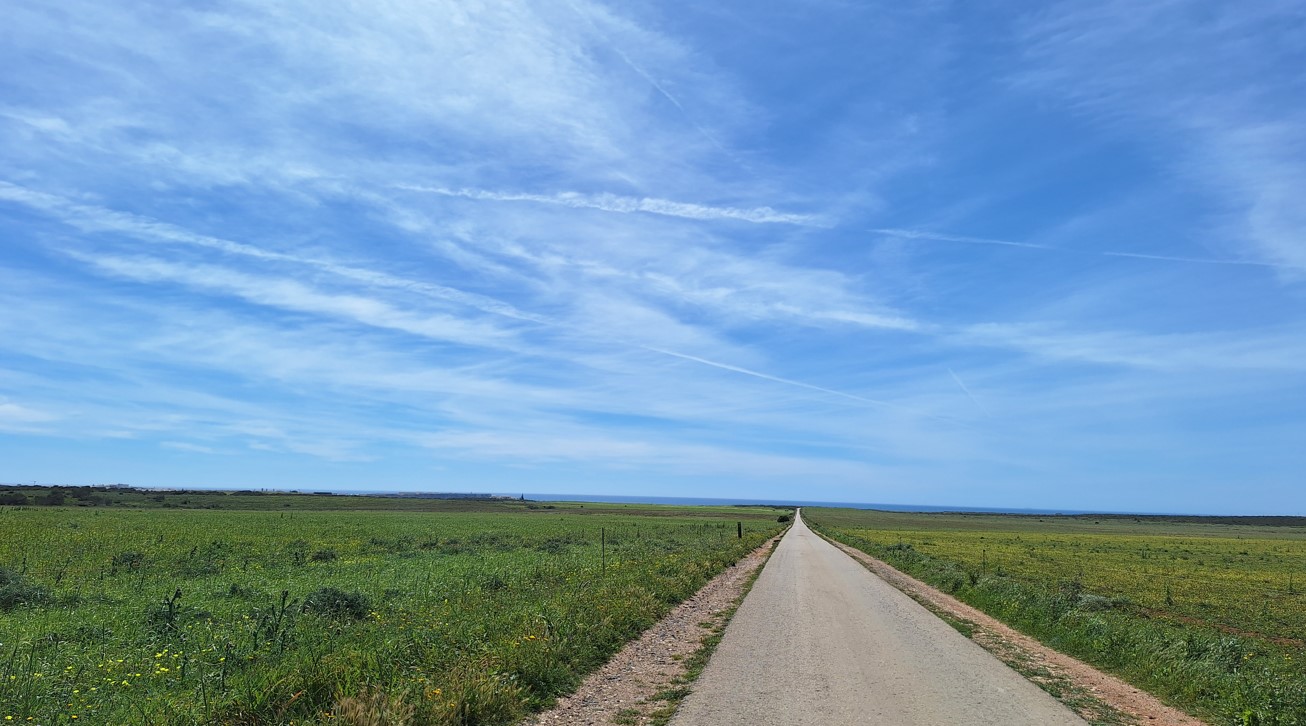Lähdin aamulla ajamaan länteen kohti Euroopan lounaisinta niemeä ja maailmanloppua kuten Cabo de São Vicenten niemeä kutsutaan, sillä niemen jälkeen alkaa Atlantin valtameri ja toisella puolella on Amerikka.
I left in the morning to drive west towards the southwesternmost cape of Europe and the end of the world, as the Cape of Cabo de São Vicente is called, because after the cape the Atlantic Ocean begins and on the other side is America.

Alue on jylhäistä kalliota meren rannalla sekä tasaista maaseutua.
The area is steep cliffs by the sea and flat countryside.

Kun nousee autosta Cabo de São Vicenten majakan parkkipaikalla, usein ensimmäisenä kiinnittää huomion alppikiitäjiin. Niitä näkyi parisenkymmentä tälläkin kertaa.
When you get out of the car at the Cabo de São Vicente lighthouse parking lot, the first thing you often notice are the Alpine swifts. A couple dozen of them were visible this time as well.

Tällä kertaa oli mielenkiintoista seurata myös yksittäisen tuulihaukan liitelyä hyvissä tuulissa.
This time it was interesting to follow a single Kestrel to fly through good winds.

Alue on melko karua.
The area is quite rural.

Kun sitten lähdin rannalta sisämaahan, oli tie suora ja muutamassa pensaassa lauloi harmaasirkku.
When I left the beach inland, the road was straight and Corn buntings were singing in a few bushes.

Yhdessä pensaassa havaitsin mielenkiintoisen pikkulinnun ja kotona sain määritettyä sen pensastaskuksi.
In one of the bushes I noticed an interesting little bird and at home I was able to identify it as a Whinchat.

Noin parin kilometrin ajon jälkeen tulin pensaikkoalueelle ja lähdin hieman kävelemään maastoon.
After about a couple of kilometers, I came to a bush area and went for a short walk in the countryside.

Yhtäkkiä näin useita värikkäitä lintuja lentelemässä lähettyvillä. Ne olivat kauniita mehiläissyöjiä.
Suddenly I saw several colorful birds flying nearby. They were beautiful European bee-eaters.


Paluumatkalla rannalle kohti Sagresia otin hienon kuvan suorasta tiestä ja takana häämöttävästä merestä.
On the way back to the beach towards Sagres, I took a nice picture of the straight road and the sea looming behind.

Jos täällä liikkuu loka-marraskuussa saattaa nähdä paljon petolintuja, sillä niiden muuttoreitti kulkee tämän niemimaan kautta Afrikkaan. Lokakuun alussa alueella on vuosittainen iso lintutapahtuma, Sagres Birdwatching & Nature Activities Festival, joka kerää paikalle lintuharrastajia ympäri maailman.
If you come here in October-November, you might see a lot of birds of prey, because their migration route goes through this peninsula to Africa. At the beginning of October, there is a yearly big bird event in the area, the Sagres Birdwatching & Nature Activities Festival, which gathers bird watchers from all over the world.
Kaikenkaikkiaan tällä reissulla havaitsin seuraavat linnut: 20 alppikiitäjää, 13 etelänharmaalokkia, 15 suulaa, 1 merimetso, 2 tuulihaukkaa, 3 mustaleppälintua, 7 mehiläissyöjää, 9 alppivarista, 2 korppia, 1 lyhytvarvaskiuru, 5 töyhtökiurua, 1 mustapäätasku, 1 pensastasku, 2 tikliä ja 3 harmaasirkkua.
All in all, on this trip I observed the following birds: 20 Alpine swifts, 13 Yellow-legged gulls, 15 Northern gannets, 1 Great Cormorant, 2 Kestrels, 3 Black redstarts, 7 European bee-eaters, 9 Red-billed choughs, 2 Ravens, 1 Short-toed lark, 5 Crested larks, 1 European stonechat, 1 Windchat, 2 European goldfinch and 3 Corn buntings.
